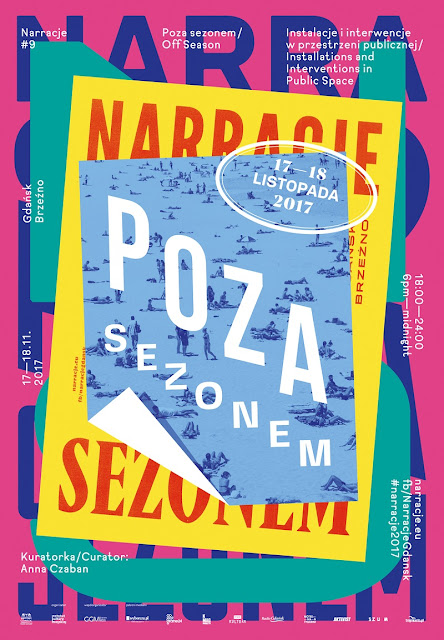NEST
Base: I, you, he, she, it, we, you, theySuperstructure: an outside sphere – a family, a house, an inside sphere – ego + alter ego + id
an emotional and intellectual baggage of direct and indirect experience that we accumulate in ourselves (each of us is their own nest, in which something/someone is constantly nesting) warmth, smell, fight, mum, culture, closeness, retreat, route, shelter, sense of safety, family ties, intricate construction, environment, surroundings, security, thallus, soil, synergy, Lot – Gallery at Vistula, kitchen, cull, asylum, home, return, uterus, habitat, ecotope, wasps, hatchling, stork, security, preservation, beginning, home, siblings, feeding, meticulousness, structure, care, Bogna, stork, chimney, hatchling, offspring, feather, bench, process, stigma, descendant, shelter, a hiding place of a very delicate and fragile make-up that needs to be constantly maintained, pallet, hellhole, lair, roof, coronet, community, constraint, settling down, security.
“Unless one likes complexity one cannot feel at home in the twenty-first century.”[1]
“Can the significance of existence be depleted? Assuming that existence is a value (and this is the assumption I make), even though it can be a curse, it does not change a thing when I ask: can anyone annihilate the value of this curse?”[2]
The eponymous Nest was made, in different ways, by the artists who represent two academic centers in Poland: the Academy of Fine Arts in Gdańsk and the Faculty of Fine Arts in Toruń. The intimate statements, first written down, then visualized, drag the viewers in THEIR nests, more or less metaphorical, at times intensely literal, or ambiguous. In this case, the nest is a synonym of three words articulated by each of the artists engaged in the exhibition. They built their nests for themselves and for others.
The exhibition project is a critical commentary on the contemporary times, stuffy and increasingly alarming. While analyzing the reality in which she lives, Rosi Braidotti writes that there came to existence a new ethics based on the experience of pain, sensitivity, and changeability.[3] According to the philosopher, these three components should be constitutive of our humanity and our sensitivity toward the world. Empathizing and accepting the continuous fluctuation constitute the character of the modern-day human.
[1] Rosi Braidotti, Metamorphoses. Towards a Materialist Theory of Becoming, Cambridge–Malden, MA 2002, p. 1.
[2] Jolanta Barch-Czaina, Szczeliny istnienia, Warsaw 1992, p. 139, trans. mine.
[3] Rosi Braidotti, Nomadic Subjects: Embodiment and Sexual Difference in Contemporary Feminist Theory, New York 2011.
KATARZYNA LEWANDOWSKA
translated by: Marta Sibirska
PL
GNIAZDO
Baza: ja, ty, on, ona, ono, my, wy, one, oni
Nabudowa: ojczyzna/ojczyzny, patriotyzm, pamięć, język, narodowość, praca, emigracja, imigracja, nomadyzm, walka
Jeśli ktoś nie lubi skomplikowania, złożoności i zmian, nie może dobrze się czuć w XXI wieku”
„Czy wartość istnienia może być uszczuplona? Zakładając, że istnienie jest wartością (a takie przyjmuję założenie), choć może być przekleństwem, ale to niczego nie zmienia, gdy pytam, czy wartość tego przekleństwa może być przez kogokolwiek zniszczona?”
Tytułowe Gniazdo zostało uplecione na różne sposoby przez artystki i artystów którzy reprezentują dwa ośrodki akademickie w Polsce: Akademię Sztuk Pięknych w Gdańsku oraz Wydział Sztuk Pięknych w Toruniu. Intymne wypowiedzi zapisane słowem a następnie zwizualizowane wciągają tego, który patrzy w ICH gniazda, mniej lub bardziej metaforyczne, czasami dosłowne do bólu, wieloznaczne. W tym przypadku gniazdo jest synonimem trzech słów wyartykułowanych przez każdą z artystek i każdego z artystów biorących udział w wystawie. Zbudowali swoje gniazdo dla siebie i innych.
Projekt wystawy stanowi krytyczny komentarz do współczesnych czasów: dusznych i co raz bardziej niepokojących. Rosi Braidotti analizując rzeczywistość w której żyje pisze:: „narodziła się nowa etyka oparta na doświadczeniu bólu, wrażliwości i zmienności”. Według filozofki te trzy komponenty powinny budować nasze człowieczeństwo i naszą wrażliwość wobec świata. Współodczuwanie i akceptacja ciągłej fluktuacji ‘stanowią’ o charakterze dzisiejszego człowieka.
Poprzez ciągły ruch, który właściwie jest najcelniejszą wytyczną XX i XXI wieku dotychczasowe, niby stałe punkty oparcia zniknęły. Zharmonizowany, poukładany i jednocześnie zamknięty podmiot został przymuszony do intensywności, której być może wcale nie chce. Jego poszukiwanie ‘utraconego czasu’ i dawnego spokoju nie przynosi oczekiwanych rezultatów. Postawy kosmopolityczne próbują niwelować granice. Wydawać by się mogło, że taka sytuacja jest korzystna dla większości ludzi. Jednak okazuje się, że każda inność jest potencjalnym zagrożeniem dla Ja, które jest w sobie i dla siebie. Każdy inny staje się Obcym. Gniazda są obwarowane i należą wyłącznie do swoich a czasami tylko do naszych. Taka sytuacja jest bardzo niebezpieczna, znamy ją z doświadczenia oraz z historii. Isaiah Berlin podsumowując miniony wiek napisał: „(…) Innym (czynnikiem) są niewątpliwie potężne nawałnice ideologiczne, które wstrząsnęły losem dosłownie całej ludzkości: rewolucja rosyjska – wraz z jej następstwami – totalitarystycznymi tyraniami prawicowymi i lewicowymi – oraz erupcja nacjonalizmu, rasizmu, gdzieniegdzie fanatyzmu religijnego.” Jakże trafna diagnoza czasów współczesnych.
Gniazdo ma naturę ambiwalentną.
Czy jest miejscem bezpiecznym? Powinno być, ale nie zawsze jest. Ptaki po wykluciu rywalizują ze sobą. Silniejsze dziobią najsłabsze z rodzeństwa, które ucieka na krawędź gniazda aż w końcu z niego wypada. Gniazdo to przestrzeń dobra i zła. Życiodajna i śmiercionośna, budującą i całkowicie destruktywna, zdrowa i chora. Ta która daje i ta która zabiera.
Współczesny świat stanął nad przepaścią. Próby życia w zgodzie z drugim, Innym, naturą nie powiodły się. Człowiek doświadczając kolejnych konfliktów zbrojnych nie uczy się na błędach poprzedników i swoich, powtarza je w nieskończoność. Nauka i technologia rozwijają się w niewyobrażalnie szybkim tempie a człowiek ciągle hierarchizuje świat, koncentrując się na swoim ego. Bezwzględny, wciąż walczy o władzę – opresyjnie, siłowo.
Taka postawa – neurotyczna i agresywna może wyłącznie prowadzić do samozniszczenia. Stabilna dotąd konstrukcja gniazda zostaje rozmontowana, chwieje się niebezpiecznie aby na sam koniec rozpaść się na wiele fragmentów.
Zaproszone/eni przez Dorotę i przeze mnie artystki i artyści w swoich pracach odnieśli się do kondycji świata, która wygląda marnie.
Katarzyna Lewandowska
Gniazdo. Polska sztuka współczesna wobec 'Granic'





























